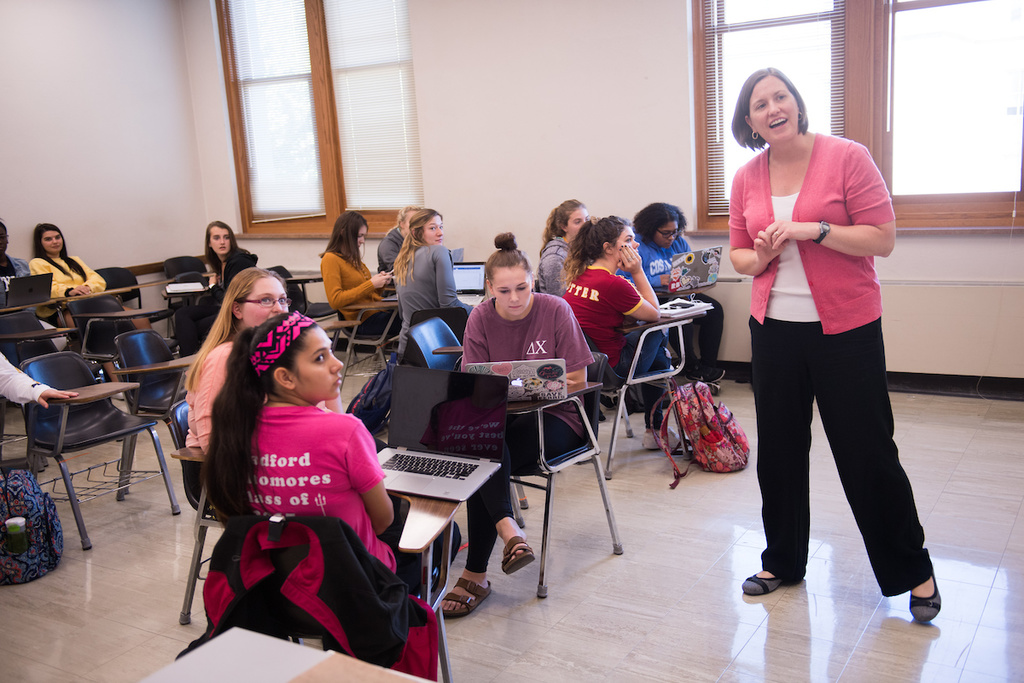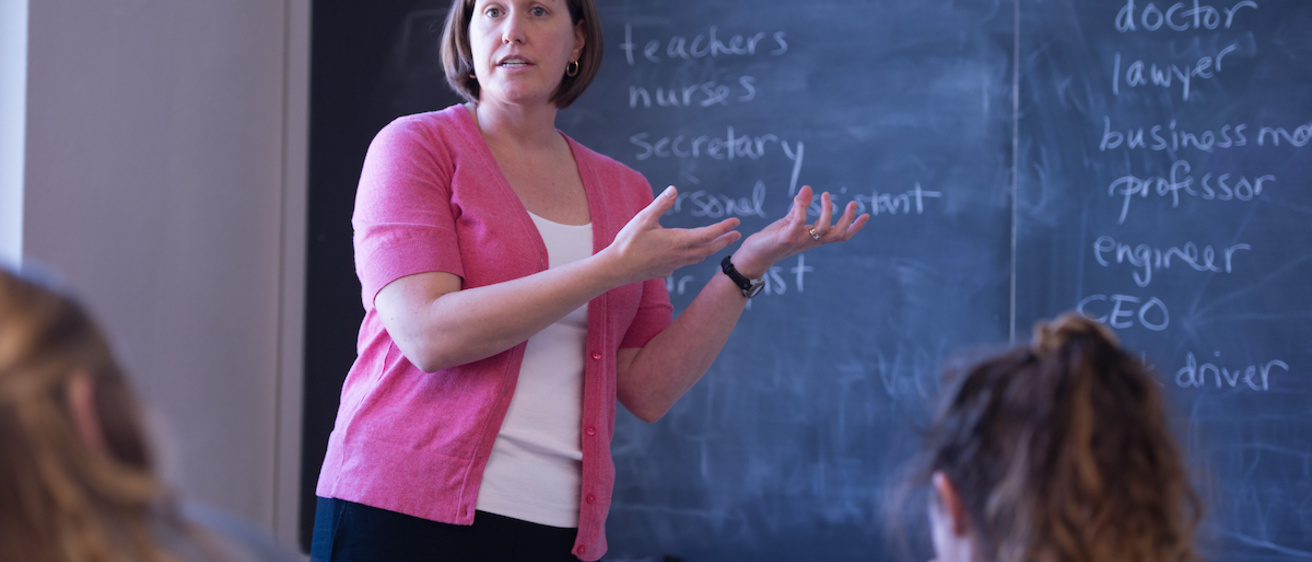A new seminar at the University of Iowa is using the real-life story behind the hit book and film Hidden Figures to teach important lessons and examine the history—and future—of women in STEM fields.
In an effort to help students transition to college and grow intellectually, the University of Iowa offers First-Year Seminars on a variety of subjects—from Egyptology to superheroes.
The seminars are taught by faculty and senior staff and offer students the chance to learn in small classroom environments, make friends with peers who have similar interests, and meet important academic mentors.
“We really try to make sure that every corner is covered,” says Angela Lamb, who coordinates the First-Year Seminar program, referring to the more than 120 seminars offered in 2017. “I’m always amazed by how much support we get from our faculty and staff and how much passion they put into these seminars.”
UI math professor Cynthia Farthing created the Uncovering the Hidden Figures course as part of the UI’s First-Year Seminars, courses intended to help new students adjust to university-level academic work and classroom discussion.
The class teaches basic mathematical concepts and tackles issues surrounding gender and racial bias in STEM fields. Farthing’s inspiration for the course was the real-life story of three African American women whose mathematical genius helped NASA launch a man into space, and whose moving story was recounted in a best-selling novel and blockbuster film.
“I found myself thinking about those rooms full of women doing mathematical calculations,” Farthing says, referring to the women who made astronaut John Glenn’s history-making orbit possible. “The way we do math has totally changed. So too has the role of women in technology fields. The more I thought about it, the more I wanted to put a spotlight on mid-century history and the contributions women made in STEM fields from World War II on.”
Farthing’s course uses the book Hidden Figures, by Margot Lee Shetterly, which tells the story of NASA mathematicians Katherine Johnson, Dorothy Vaughan, and Mary Jackson, to examine how the international space race expanded the opportunities available to female scientists, mathematicians, and engineers. The course also explores how the role of women in STEM fields continues to evolve today, and even includes an exercise using a slide rule, a tool used decades ago to make calculations.
“Working with the slide rule was pretty amazing,” says Mariah Griffin, a math major from Alburnett, Iowa, referring to the tool that the Hidden Figures women used to calculate Glenn’s 1962 voyage. “It was like walking in the shoes of someone from another generation. It’s hard to be precise with a slide rule—you have to estimate to the nearest decimal—and so when you think that they didn’t make any mistakes, that’s really impressive.”
Even Farthing, who has a PhD in mathematics and runs the UI’s Math Tutorial Lab, where every year thousands of UI students get help with algebra and calculus, found the slide rule frustrating.
“It’s not at all self-evident,” Farthing says of her own clumsiness with the device. “And when I first showed them to the students, some of them had worried looks on their faces. I think they appreciate their calculators a bit more now.”
Because the course is part of the First-Year Seminars program, which encourages students to question long-held beliefs and mature intellectually, much of the class is spent discussing reading materials and sharing opinions. Besides reading the Hidden Figures book, students also are reading excerpts from books that chronicle other advances women have made in science and technology, as well as biases some may continue to endure.

Although the class includes two math majors — Griffin and Maya George — the other 16 students in the class come from a variety of disciplines, including criminal justice and business. Farthing says she’s glad that the class, which is being offered for the first time, appealed to students from many different majors. While only females enrolled this semester, the class is open to everyone.
Both Griffin and George take advanced mathematics courses—George wants to go to medical school; Griffin wants to be a math teacher—and say Uncovering the Hidden Figures has made them thankful to live in an era when women aren’t ridiculed for liking math. However, when they read about gender disparities in STEM fields, they say they feel inspired to take action.
“When Dr. Farthing started talking about the relatively small number of women in math and science fields, it made me question my decision to be a math major,” says George. “But now I am convinced that I should stick with it. When people say I don’t look like a math major, I feel like it’s a challenge.”
For Griffin, the challenge is only slightly different.
“The stereotype is that girls aren’t interested in math, so I want to create an atmosphere where they feel that it’s OK to like math,” she says.
During a recent lecture, Farthing asked students why it matters if women drop out of STEM fields—or business or law or any other field, for that matter—due to a loss of opportunity tied to gender or racial bias. What would have happened if NASA scientists Katherine Johnson, Dorothy Vaughan, and Mary Jackson had walked away from the challenge?
“Why should we care about this?” Farthing asks. “What does it matter?”
There was a pause while students considered the question, and then first-year student Jada Marshall responded with the answer Farthing had been waiting for: “Yes, it does matter because otherwise women’s talents go to waste.”
